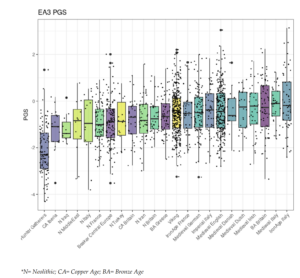decent paper about sex differences in jobs.
abstract:
Common examples of what is perceived as workplace
inequality–such as the “glass ceiling,” the “gender gap” in
compensation, and occupational segregation–cannot be well
understood if the explanation is limited exclusively to such social
causes as discrimination and sexist socialization. Males and females
have, on average, different sets of talents, tastes, and interests, which
cause them to select somewhat different occupations and exhibit
somewhat different workplace behaviors. Some of these sex
differences have biological roots. Temperamental sex differences are
found in competitiveness, dominance-seeking, risk-taking, and
nurturance, with females tending to be more “person-oriented” and
males more “thing-oriented.” The sexes also differ in a variety of
cognitive traits, including various spatial, verbal, mathematical, and
mechanical abilities. Although social influences can be important,
these social influences operate on (and were in fact created by)
sexually dimorphic minds.
It is almost axiomatic that substantial changes in the environment
of a complex organism will result in changes in its behavior.
Therefore, we should not be surprised when changes in the economy
or changes in the nature of work are followed by changes in
workforce behavior and hence changes in workplace outcomes. For
those keeping track of the “numbers,” these changes may be
characterized as either increasing or decreasing equality, depending
upon the particular definition of equality selected. Whether one views
a particular outcome as a harbinger of “the end of men” or a
reflection of continued sexual inequality of women may be a
consequence of whether the focus is on group averages or the tail end
of distributions, as it may turn out, for example, that even if women
may do better as a group on some measures, men may still dominate
at the top.
